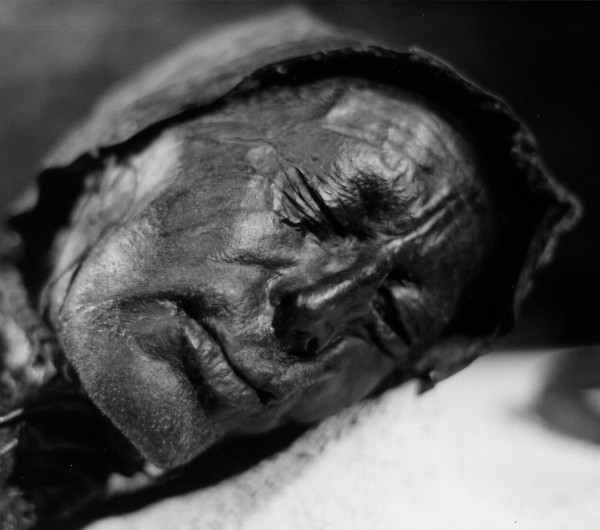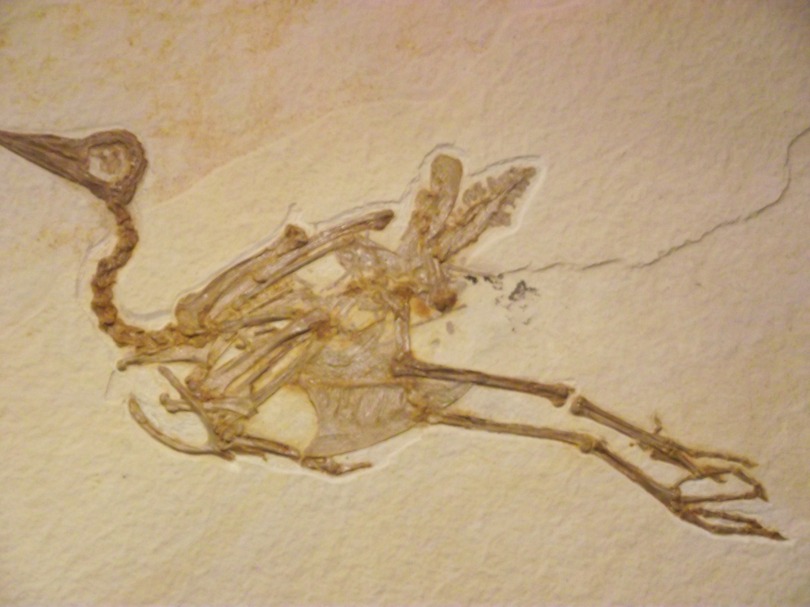Posts in this series:
Out of Answers in Genesis’s ten best evidences for a young earth, Mary Schweitzer’s findings of soft tissue remnants in dinosaur fossils are probably the best known.
Thanks to films such as the Jurassic Park franchise, people get all excited about the possibility of resurrecting dinosaurs from DNA fragments, and consequently the discovery of dinosaur soft tissue remnants ticks all the journalists’ boxes for a good story. It also ticks all the young-earth creationists’ boxes for a good story, for common sense tells us that 68 million year old dinosaur bones shouldn’t contain soft tissue.

But the number one rule of journalism — “never let the truth get in the way of a good story” — should not apply to Christian apologetics, so we need to make sure we have all the facts at our disposal before getting too excited about this one.
If the earth is only six thousand years old, why has nobody sequenced T-Rex DNA yet?
The first thing that you need to realise is that soft tissue remnants in dinosaur fossils are rare, difficult to extract, and very badly degraded. They are also only ever found in conditions that are optimal for preservation — several metres underground, having been rapidly buried, and in large, unbroken bones that effectively acted like a sealed canister. Furthermore, other scientists have not been able to replicate Schweitzer’s more extraordinary findings.

Given the right condition, carcasses can survive for thousands or even tens of thousands of years completely intact. Consider Ötzi the Iceman, for example — a 5,000 year old body found in the Austrian Alps, who has even had his whole genome sequenced. Then there was Tollund Man, a two thousand year old body found in a peat bog in such a good state of preservation that when he was first discovered, the police were called because he was initially believed to have been the victim of a recent murder!
That is the state of preservation of dinosaur carcasses that we should expect to see in a six thousand year old earth. Current YEC teaching tells us that Noah had dinosaurs on board the Ark, and that the Flood was followed immediately by an ice age lasting from 200 to 900 years, depending on which YEC you ask. An ice age would have provided perfect preservation conditions, so we should have found dinosaur carcasses in that condition somewhere. Their DNA should be intact and fully sequenceable. Where are they?
Make sure that you accurately describe what Mary Schweitzer actually discovered.
Many YEC claims that I’ve seen grossly exaggerate the state of preservation of the soft tissue remnants that Schweitzer discovered. This makes these claims a source of mockery that brings the whole Christian message into disrepute, as this video illustrates:
Scott Buchanan has a fairly lengthy post describing what Schweitzer actually found in considerable detail on his blog, Letters to Creationists. In a nutshell, she did discover soft tissue remnants, especially of particularly durable components such as collagen from bone fragments and blood vessels. She did not discover actual blood cells, however, but remnants of blood cells consisting of iron particles and durable long-lived heme molecules (which, it turns out, act as a preservative). And although she found traces of DNA, they were in quantities far too small to be sequenced.
Schweitzer herself is unhappy about the way her work gets misrepresented by pastors and evangelists. In an interview with BioLogos, she said this:
One thing that does bother me, though, is that young earth creationists take my research and use it for their own message, and I think they are misleading people about it. Pastors and evangelists, who are in a position of leadership, are doubly responsible for checking facts and getting things right, but they have misquoted me and misrepresented the data. They’re looking at this research in terms of a false dichotomy [science versus faith] and that doesn’t do anybody any favors.
Remarkable … but not that remarkable.
Now having said that, Mary Schweitzer’s discoveries were pretty surprising, and the state of preservation of the soft tissue remnants was better than expected. In fact, she then went on to say this:
Still, it’s not surprising they’ve reacted this way—the bone that I first studied I got from Jack, and when I gave him our initial results he was rather angry—I called him a few times and by my third call he said, “Dammit Mary the creationists are just going to love you.” But I said, “This is just what the data say— I’m not making it up.”
Mary Schweitzer herself is an evangelical Christian, and in fact a former young-earth creationist. However, even despite this, she does not consider that her findings justify a young earth, nor even that they cast doubt on the radiometrically determined ages of the fossils. In fact, she reports that she frequently gets hate mail from YECs condemning and judging her and accusing her of “compromise” for not coming out as YEC on account of her findings.
But Schweitzer’s reasons for not throwing her hat into the YEC ring have nothing to do with compromise. Remarkable as her discoveries may be, they fall far, far short of confirming a young earth.
In addition to misunderstandings about what was actually found, this argument is basically an appeal to “common sense,” which would tell us that soft tissue doesn’t survive for “muuuuhlions” of years. But science does not operate by appeals to “common sense.” It operates by measuring things.
Allentoft et al (2012) have studied how long it takes DNA to degrade. They found that, assuming exponential rates of degradation, it would take DNA an average of 131,000 years at 15°C, 882,000 years at 5°C, or 6.8 million years at -5°C. But they also found a very wide spread to their results, with quantities of DNA in the samples that they studied varying by a factor of 50,000. With these measurements having been made, it’s perfectly plausible that some DNA could have survived for 68 million years.
The age of the fossils is very well established.
The fact of the matter is that the ages of the fossils in question are far better established than our understanding of how long soft tissue can last. Contrary to the claims of young-earth spin doctors, radiometric dating is very reliable. Fossils can be dated to within one percent, while the latest state-of-the-art techniques can achieve results better than one part in a thousand, with their accuracy confirmed by cross-checking multiple independent methods against each other. We’ve already seen that it is far more reliable than YECs make it out to be; that it is not based on untestable assumptions; and that claims about accelerated nuclear decay are fantasy, pure and simple.
On the other hand, nobody has conclusively determined an upper limit to soft tissue preservation times. The rate at which soft tissue decomposes and fossilises is strongly dependent on a wide variety of factors, many of which are unknown. It can decay in a matter of days in hot, moist conditions, but will remain preserved all but intact for thousands of years in cold, dry, anoxic conditions, and only decay very, very slowly after that.
Ultimately, we simply don’t know how long soft tissue remnants can last.
Featured image credit: Ottawa – Museum of Nature (via Wikimedia Commons)
